
Advice from Will
I love astronomy and telescopes. It is probably my favorite subject of all. Here are some of my books on the subjects. I will give you some advice and recommendations if you are looking for a book.
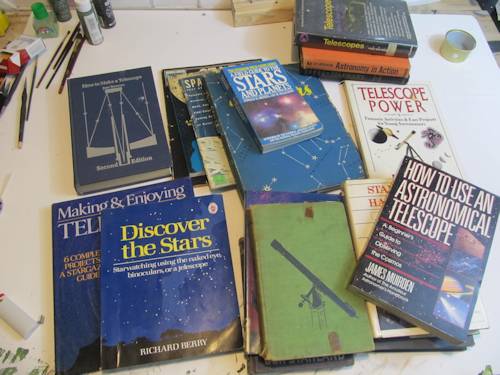
When Purchasing a book about this subject you should think about your goal. There are three major reasons for buying abook in this subject.
1. The first reason is that you are looking to learn about the universe in terms of the science of it. Maybe you want to learn about the planets, the solar system, the galaxies, black holes, comets and things like that. Think of it as things you might learn in an astronomy class. In this case you want to get a book that is specifically aimed at the subject of astronomy.
2. The second reason is that you want to get out at night and observe the amazing things in the night sky. You want to use your eyes, binoculars or a telescope to observe things. In this case you should get some kind of a book that is aimed at something called "Star Gazing".
3. The instruments and tools of astronomy - This would be all about telescopes, binoculars, and the other tools that are used in observing and understanding the universe. This area also includes lots of books on how to make telescopes. This area will also overlap with the first two areas in that there are lots of good books on how to use telescopes and binoculars to observe things in the night sky.
Astronomy Books
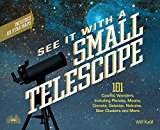
See It with a Small Telescope: 101 Cosmic Wonders Including Planets, Moons, Comets, Galaxies, Nebulae, Star Clusters and More - Available in paperback and kindle on Amazon right here
Have Fun Exploring the Stars with Close-up Views of Space Objects Right from Your Own Backyard
It doesn't take an astronomy degree to feel like an astronaut and explore space with a small telescope. See It with a Small Telescope takes the mystery and struggle out of exploring the unknown and discovering new worlds! With hands-on tips and tricks, this book offers a complete guide to unleashing the full power of a small telescope and going beyond the basics.
• Saturn's Rings
• Jupiter's Moons
• Orion Nebula
• Andromeda Galaxy
• Polaris Double Star
• Pegasus Globular Cluster
• Apollo 11 Site
• ...and more!
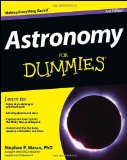
Astronomy For Dummies
The fun and easy way to explore the night sky
Do you know the difference between a red giant and a white dwarf? From asteroids to black holes, this easy-to-understand guide takes you on a grand tour of the universe. Featuring updated star maps, charts, and an insert with gorgeous full-color photographs, Astronomy For Dummies provides an easy-to-follow introduction to the night sky. Plus, this new edition also gives you the latest theories, explanations, and insights into the basic workings of the universe.
- Includes updated schedules of coming eclipses of the Sun and Moon and a revised planetary appendix
- Covers recent discoveries in space, such as water on the Moon and Pluto's demotion from "planet" status
- Collects new websites, lists of telescope motels, sky-watching guides, and suggestions for beginner's telescopes and suppliers
- Brings you up-to-speed on the latest social trends and personal technology, such as stargazing mobile apps, NASA video, and the prevalence of "Citizen Science" networks
Whether you're an amateur astronomer, space enthusiast, or enrolled in a first year astronomy course, Astronomy For Dummies has you covered.
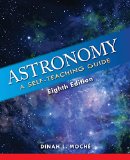
Astronomy: A Self-Teaching Guide, Eighth Edition (Wiley Self Teaching Guides)
For a generation, Astronomy: A Self-Teaching Guide has introduced hundreds of thousands of readers worldwide to the night sky. Now this classic beginner's guide has been completely revised to bring it up to date with the latest discoveries. Updated with the latest, most accurate information, new online resources, and more than 100 new graphics and photos.
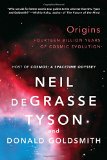
Origins: Fourteen Billion Years of Cosmic Evolution
Our true origins are not just human, or even terrestrial, but in fact cosmic. Drawing on recent scientific breakthroughs and the current cross-pollination among geology, biology, astrophysics, and cosmology, "Origins" explains the soul-stirring leaps in our understanding of the cosmos. From the first image of a galaxy birth to Spirit Rover's exploration of Mars, to the discovery of water on one of Jupiter's moons, coauthors Neil deGrasse Tyson and Donald Goldsmith conduct a galvanizing tour of the cosmos with clarity and exuberance. 32 pages of color illustrations
Star Gazing Books
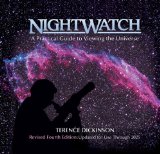
NightWatch: A Practical Guide to Viewing the Universe
NightWatch has been acclaimed as the best general interest introduction to astronomy. The fourth edition has improvements over the 3rd edition in every chapter, including:
- The famous charts, ideal for stargazers using a small telescope or binoculars
- A complete update of the equipment section, including computerized telescopes
- An enlarged photography section, including how-to instructions for using the new generation of digital cameras for astronomical photography, both with and without a telescope
- The tables of future solar and lunar eclipses, planetary conjunctions and planet locations, updated through 2025.
This edition includes star charts for use in the southern hemisphere. There are also dozens of new photographs throughout the book that show the latest thrilling discoveries made by current space observatories and probes.
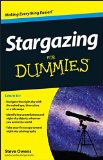
Stargazing For Dummies
Reach for the stars
Stargazing is the practice of observing the night sky and its contents - from constellations through to planets and galaxies. Stars and other night sky objects can be seen with the naked eye, or seen in greater numbers and in more detail with binoculars or a telescope.
Stargazing For Dummies offers you the chance to explore the night sky, providing a detailed guide to the main constellations and also offering advice on viewing other night sky objects such as planets and nebulae. It's a great introduction to a fun new hobby, and even provides a fun way to get the kids outside while doing something educational!
- Gives you an introduction to looking at the sky with binoculars or a telescope
- Offers advice on photographing the night sky
- Without needing to get your head around mind-bending theories, you can take part in some practical physics
If you're looking for easy-to-follow guidance on getting to know the night sky, Stargazing For Dummies has you covered.
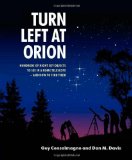
Turn Left at Orion: Hundreds of Night Sky Objects to See in a Home Telescope - and How to Find Them
With over 100,000 copies sold since first publication, this is one of the most popular astronomy books of all time. It is a unique guidebook to the night sky, providing all the information you need to observe a whole host of celestial objects. With a new spiral binding, this edition is even easier to use outdoors at the telescope and is the ideal beginner's book. Keeping its distinct one-object-per-spread format, this edition is also designed for Dobsonian telescopes, as well as for smaller reflectors and refractors, and covers Southern hemisphere objects in more detail. Large-format eyepiece views, positioned side-by-side, show objects exactly as they are seen through a telescope, and with improved directions, updated tables of astronomical information and an expanded night-by-night Moon section, it has never been easier to explore the night sky on your own. Many additional resources are available on the accompanying website, www.cambridge.org/turnleft.
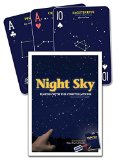
Night Sky Playing Cards
Play your favorite card games while studying the constellations. This deck features 52 different constellations, and each suit represents a different season. So you'll know what to look for and when to look for it. Learning the constellations has never been so much fun!
Telescope Books

The Complete Guide to Building Your Own 8-inch Telescope
I've written a book on how to build a telescope just like the one I did so anyone can do it. Every step and every piece is covered in great detail so you can actually build a powerful telescope much more powerful than the one's typically found in department stores. The optics are larger with greater light-gathering power and resolution, enabling you to observe fainter stars, nebulae, and galaxies, and to see finer detail on planets. The high magnifications advertised with department store telescopes are actually useable with this telescope. The eyepieces are larger with a bigger window for the eye to look into, not something you must squint and strain to see anything. The mounting is very rigid and stable, not like the flimsy tripods that move and vibrate to the point you have to move your head around trying to keep up with the bouncing image. The simple design makes the instrument able to be set up in seconds anywhere you bring it. If you follow the instructions in the order given it's almost impossible to fail. The large optics gather 500 times more light than the unaided eye, permitting stunning views of the universe. Amaze your family and friends with the achievement of making a powerful telescope that will yield a lifetime of beautiful views of the heavens. This would make a great parent-child project that would prove very rewarding. Be prepared for sighting celestial objects like you've never seen them before with this truly powerful 8-inch reflecting telescope.
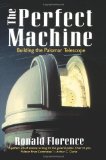
The Perfect Machine: Building the Palomar Telescope
Almost a half-century after is completion, the 200-inch Palomar telescope remains an unparalleled combination of vast scale and microscope detail. As huge as the Pantheon of Rome and as heavy as the Statue of Liberty, this magnificent instrument is so precisely built that its seventeen-foot mirror was hand-polished to a tolerance of 2/1,000,000 of an inch. The telescope's construction drove some to the brink of madness, made others fearful that mortals might glimpse heaven, and transfixed an entire nation. Ronald Florence weaves into his account of the creation of "the perfect machine" a stirring chronicle of the birth of Big Science and a poignant rendering of an America mired in the depression yet reaching for the stars.
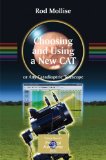
Choosing and Using a New CAT: Getting the Most from Your Schmidt Cassegrain or Any Catadioptric Telescope (The Patrick Moore Practical Astronomy Series)
Choosing and Using the New CAT will supersede the author's successful Choosing and Using a Schmidt-Cassegrain Telescope , which has enjoyed enthusiastic support from the amateur astronomy community for the past seven years.
Since the first book was published, a lot has changed in the technology of amateur astronomy. The sophistication and variety of the telescopes available to amateurs has increased dramatically. Computerized SCTs, Maksutov-Cassegrains, and most recently Meade's new and acclaimed Ritchey-Chrétiens have come to dominate the market. That means that all amateurs considering the purchase of a new telescope (not only a SCT, and not just beginners) will benefit from this detailed guide. Choosing the right telescope for particular kinds of observation (or even for general work) is far from easy - but Rod Mollise gives invaluable advice and guidance.
|
![]()

















